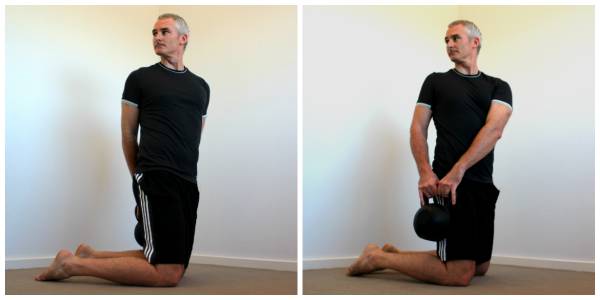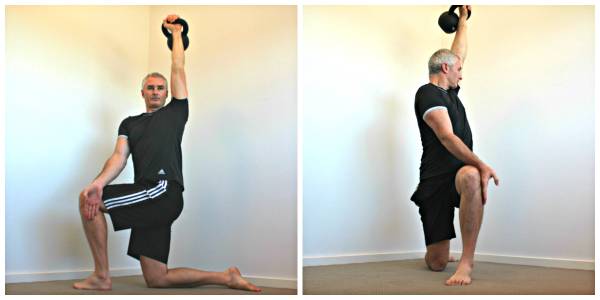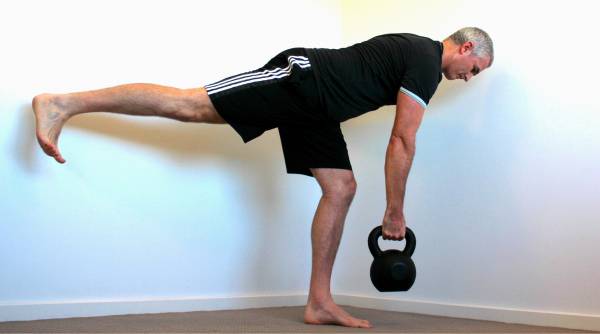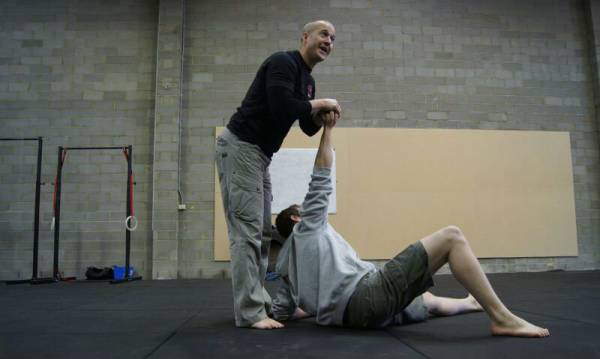You would think every exercise that could be done to strengthen the core has already been done. Since Charles Atlas first advertised his bodybuilding programs in the 1970s and 1980s, training the midsection has become one of the biggest areas of fitness, right alongside arm training.
You would think every exercise that could be done to strengthen the core has already been done. Since Charles Atlas first advertised his bodybuilding programs in the 1970s and 1980s, training the midsection has become one of the biggest areas of fitness, right alongside arm training.
Back then, not getting sand kicked in your face was the emotional tug used to convince people to buy fitness programs. These days, the tug seems to be closely tied to social media. Photographs of chiseled abs and sculpted trunks are posted to harness short-term likes, retweets, and hearts. Hopefully, social media attention will eventually translate to YouTube views and advertising revenue.
These misguided attempts at gaining long-term followers may have a legitimate basis. We know the core looks great when there’s proportion. Mini-waists have had their turn. Bloated mid-sections appeal to the hedonists, who love their food and drink a little (or a lot) more than they love exploration of the “moving arts.”
So, what could be done differently? The current appeal is right on the money – thick, powerful cores built for show and go. That means muscle development and body fat reduction. Nothing covers those two more than exercises driven by both arms and legs. This year is about combinations. The core is involved in everything, so it makes sense to know how to get it involved in a variety of exercises for maximum benefit. Here are five of those exercises.
5 Cutting-Edge Core Combinations: Groundwork on Hands and Feet
Eminent clinicians and strength coaches Dr. Mark Cheng and Dr. Jimmy Yuan recently produced groundwork progressions for prehab and rehab. These progressions dial the right numbers when it comes to safely bringing arms and legs into specific injury-prevention core exercises.
Combining these great exercises with other ground-based workouts like Animal Flow ticks the boxes for injury prevention, dynamic strength, mobility with stability, and aerobic conditioning. Doctor Cheng says, “If you don’t own it, you’re correcting. If you own the movement, you can condition.” The combination of these programs is game changing – think push ups meets crawling meets wrestling with the earth.
When the Chinese women’s volleyball team wanted an abdominal workout to supplement their performance training, I included this at the heart of a brutal twelve-minute workout. This stoic group of highly trained athletes, who never complained during their grueling seven-hour training days, let out all sorts of groans, huffs, and puffs, patting their stomachs like a tap out.
Combine groundwork with workouts like Animal Flow for injury prevention, dynamic strength, and mobility with stability.
5 Cutting-Edge Core Combinations: Tall Kneeling Rotations With Load
The tall kneeling position is simply kneeling down with an upright trunk. Being in the tall kneeling position places the hip joints in extension – a rarely used posture that counteracts the sitting epidemic of our current lifestyle. It also replicates the start and finish position of squatting and jumping.
In this position, you can fall either forwards or backwards. That means muscle activation has to stop you from falling from the knees to neck, as well as in front and behind the hips, spine, and shoulders. This low-level reflexive stability is at the essence of core stability exercise.
When you add deep breathing exercises and rotation of the eyes, head, neck, and trunk, the brain and central nervous system light up like a New Year’s Eve fireworks display. There are so many benefits to this movement that teaching and cueing it will fill an entire workout.

Left: When you add rotation, the CNS lights up; Right: A kettlbell plus rotation gets deep into reflexive stability.
When you hold a kettlebell in front of or behind you, you tap into a further supply of muscle activity that was previously asleep. Add in rotation, and you get even deeper into the reflexive stability of the deeper core. That means you switch on a deep-seated metabolism. Watch the sweat pour out when the core furnace is turned on.
These exercises are best suited for warm ups, in between heavy lifts, and as an additional corrective or conditioning exercise when fatigued from the main training workout.
5 Cutting-Edge Core Combinations: Split Kneeling Rotations With Load
Shifting from tall kneeling to half or split kneeling challenges stability in the lateral direction, bringing the inner thigh, pelvic floor, and lateral hips more into the picture. Loading the movement with a kettlebell in one hand causes a disturbance to the trunk position, so the amount of muscle activity skyrockets in order to constantly adjust the vertical position.

Holding a kettlebell in one hand causes the muscle activity to skyrocket.
5 Cutting-Edge Core Combinations: Single Leg One-Arm Lifts
The natural progression in difficulty from split or half kneeling is to reintroduce the knee, ankle, and foot to the challenge, then remove one leg from the support. The kettlebell, being a distance from the axis of rotation (the hip), demands exceptional core control against rotation and flexion. That means the obliques, back muscles, lateral buttocks, hamstrings, and even inner thighs all work together with the pelvic floor, diaphragm, shoulder stabilisers, neck muscles, and feet. You name it, it’s involved. It’s a core party, and everyone’s invited.

Single leg one-arm lifts demand exceptional core control against rotation and flexion.
5 Cutting-Edge Core Combinations: The Turkish Get Up
The greatest quality of the Turkish get up is it is a self-coaching exercise. It says to you, “Lay down, hold this weight above your head, get yourself off the floor until you’re standing up, still holding it above your head. Now reverse it. Don’t drop the weight.” There are optimal ways to do it, but there are also many variations. No single repetition is perfect, and that is where the money is. If you’re not shaking, you’re not learning.
From a professional coaching and clinical point of view, there are screening elements within the Turkish get up that tell a coach how to add squatting, deadlifting, pressing, and all overhead work into a training program. If you’re a swimmer, there are elements that show your weak links in the pool, or on the road if you’re a runner. Combine that with eye and neck movement, bearing weight through the hand, ground working from the bridge, to split kneeling then standing up in a lunge, and you could have the greatest exercise to go missing for 300 years.

The greatest exercise to go missing for 300 years.
How to Bulletproof Your Workout
If you think the Pilates revolution is the fix-all for core stability, you’re playing right into the hands of countless health clinics who know you’re a sucker.
Abdominal exercises that are done on the floor use the ground to provide stability. If you’re laying on the ground and not rolling around with purpose to restore rolling patterns, you’re not getting the most from your groundwork.
If you’re low on time and want to add some bulletproofing to your workout, you should emphasise the tall kneeling and split kneeling positions due to their ability to stress or recruit the smaller stabilising core muscles. In contrast to standing core exercises, tall kneeling and split (or half) kneeling offer narrowed bases of support. This adds a challenge because the knee, ankle, and foot are unable to provide stability. Combining these narrow bases with loads and movement of the trunk and arms will magnify any core stability problems.
Improvements in timing of muscle activity and control of the spine will warm the hearts of rehabilitation professionals who like to see the core involved in injury prevention. Injury prevention means less trips to the clinic, and that’s money in your pocket, in every sense.
More Like This:
- Do You Know What Your Core Really Is and What it Does?
- At the Core of It: Creating Strength and Tension in the Body
- Everything Is Connected: Fix Weak Links to Prevent Injury
- What’s New on Breaking Muscle Today
Photos and collages 1-4 courtesy of Greg Dea.
Photo 5 courtesy of Andrew Read.






